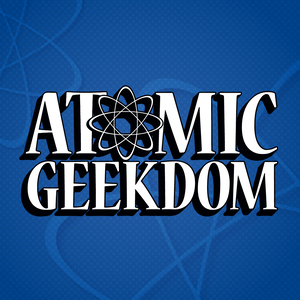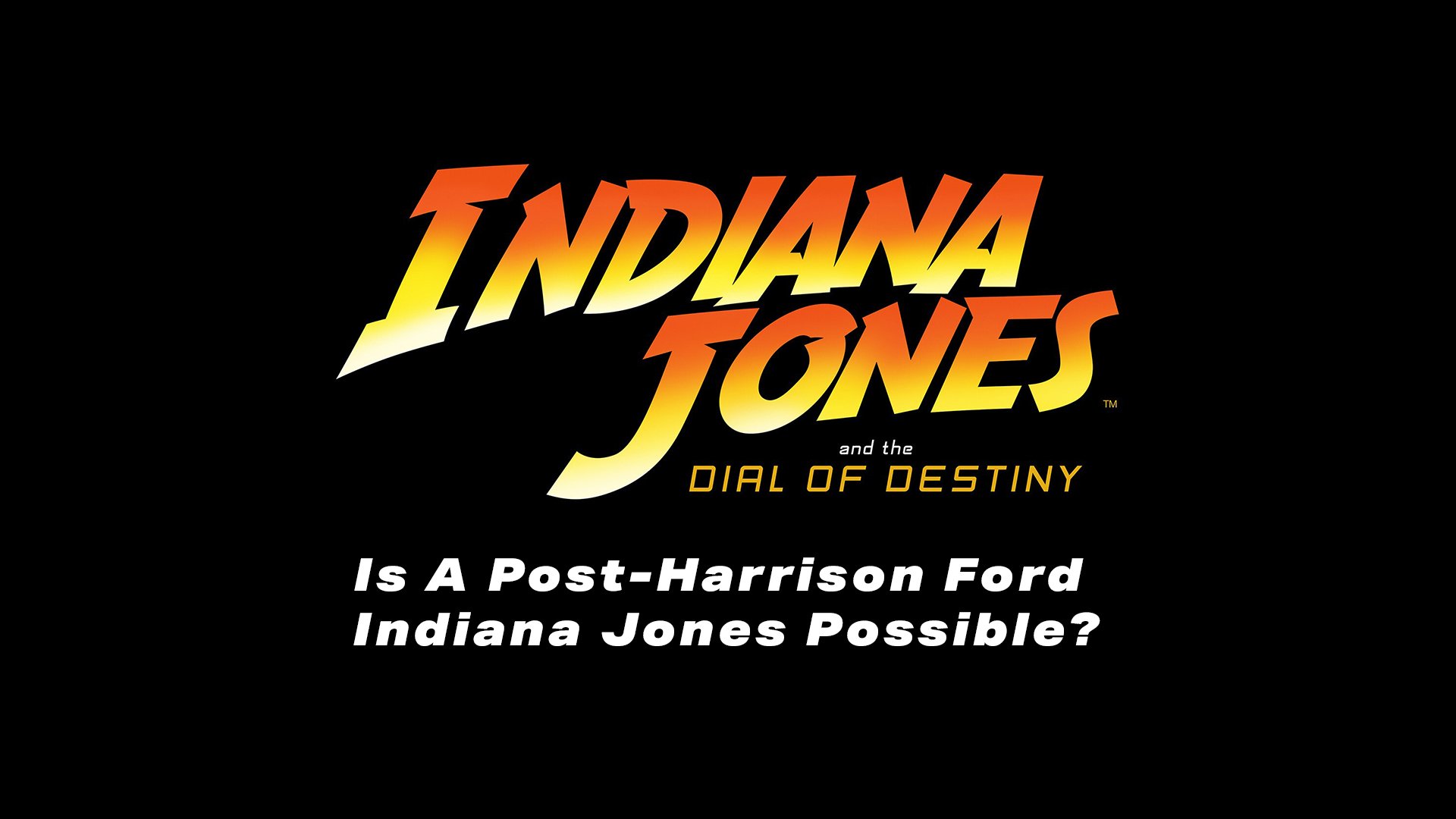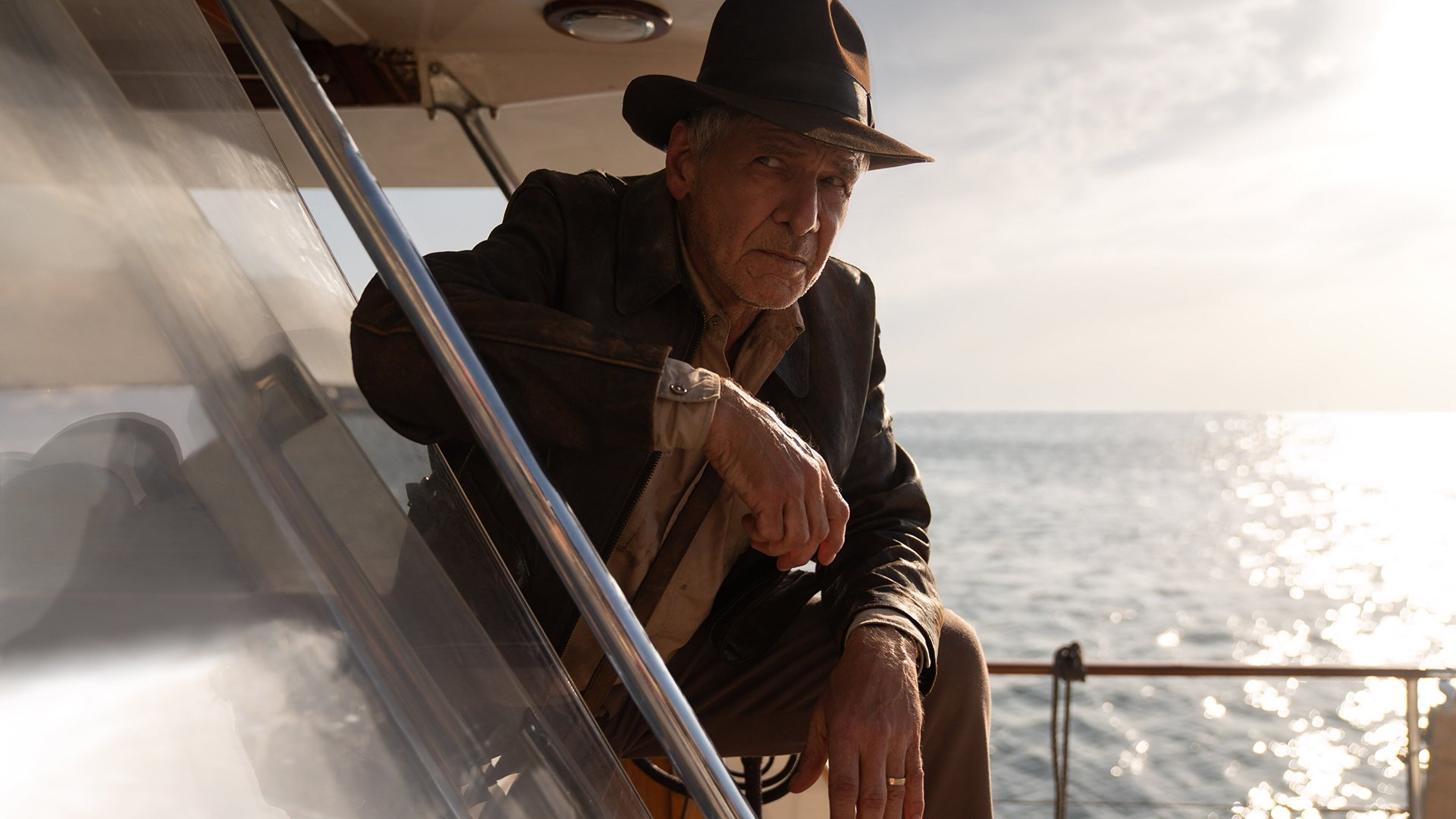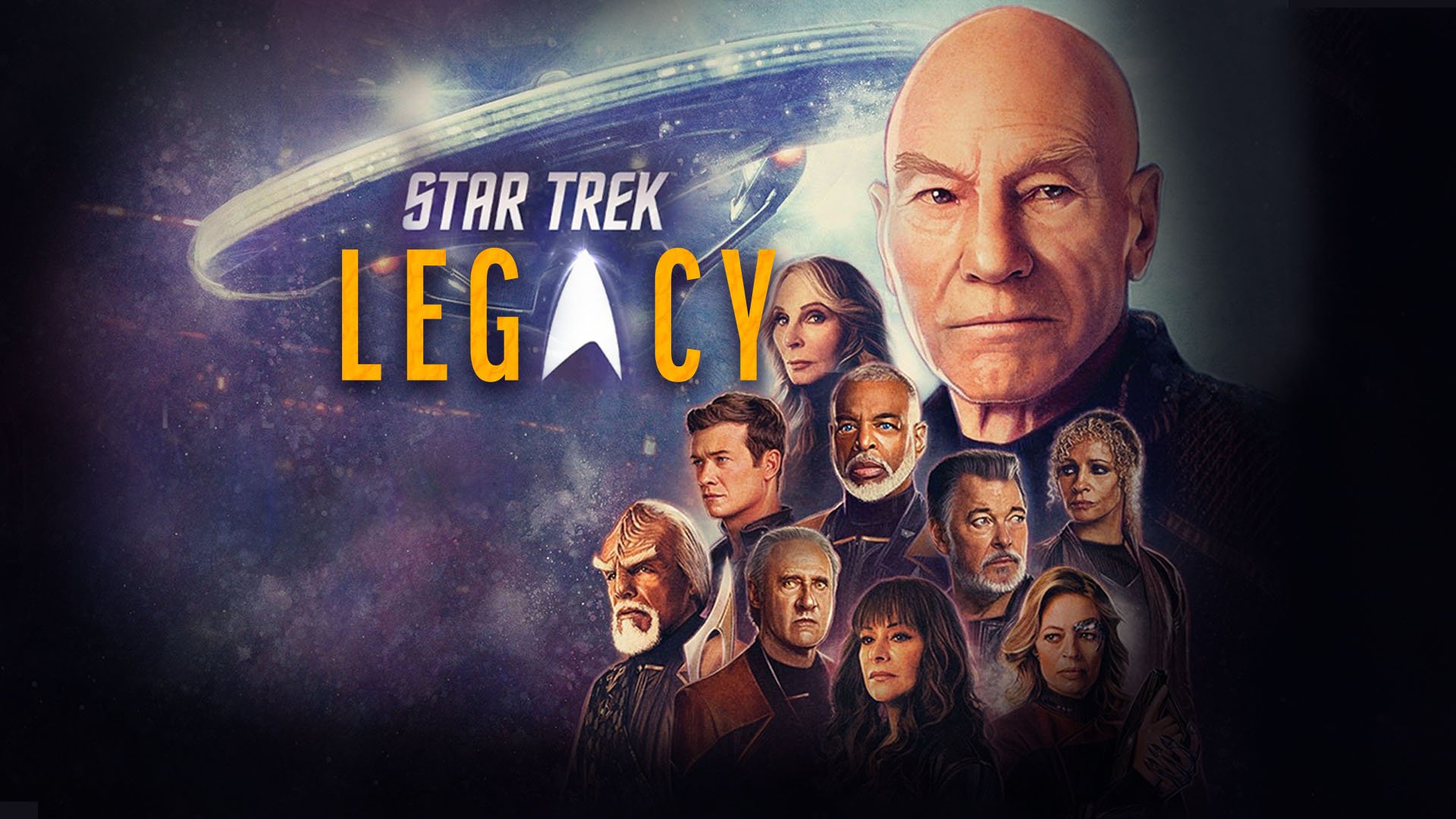By Brandon T. McClure
With Indiana Jones and the Dial of Destiny in theaters, the journey of Indiana Jones has come to an end. This is not just an emotional conclusion for Indiana Jones but also for Harrison Ford. The 80-year-old actor is ready to hang up the hat and whip for good and he’s been very clear about that in every interview for this film. But, like every new entry in a long-running franchise, most people are asking one question: What’s next?
Indiana Jones (Harrison Ford) in Indiana Jones and the Dial of Destiny.
The journey to make this fifth installment in the Indiana Jones franchise began shortly after the release of Indiana Jones and the Kingdom of the Crystal Skull. Steven Spielberg had been feeling burnt out on Indiana Jones after Indiana Jones and the Temple of Doom and only returned to direct the third installment to fulfill the trilogy. But, originally Paramount and George Lucas intended there to be five films in the franchise. After trying for years to return to the world of Indiana Jones, Lucas finally convinced Spielberg to return for a fourth installment. There was interest to return for the fifth film, but Spielberg, Lucas, and Ford couldn’t agree on what that story would be. When Lucas sold Lucasfilm to Disney, the new president of Lucasfilm, Kathleen Kennedy, wanted to get that fifth film off the ground. When it became clear that Steven Spielberg’s heart wasn’t in returning to the iconic world he began, the decision was made to continue with a new director. James Mangold, director of films like Logan and Ford v. Ferrari was chosen to bring Indiana Jone’s journey to an emotional end.
Even though this is marketed as the end of the journey that began in 1981, many fans are wondering if there could be more stories left to tell. These days it's old hat to envision a large shared franchise of interconnected multi-media properties and it can be nice to have a definitive ending and not something that goes on forever. Indiana Jones isn’t Star Wars and it doesn’t need to be. There are plenty of books and video games to keep Indiana Jones fans satiated. There’s also an argument to be made that Indiana Jones is a character that can’t be recast.
Indiana Jones and the Last Crusade was the last adventure with Indiana Jones in his prime because the next time audiences saw this character, he was in his 60s (Actually Indy was only 58 while Ford was 66). Because of this, many hardcore Indiana Jones fans may feel like there are no more stories coming with Indiana in his prime. Unless you were to recast the role like James Bond. Indiana Jones may have started life as a James Bond inspiration, but the character doesn’t share the one thing that has made Bond such a lasting icon: his recasting. At this point in the franchise, recasting Indiana Jones would be difficult if not downright impossible
Indiana Jones (Harrison Ford) in Indiana Jones and the Dial of Destiny.
A few months ago, rumors began circulating that Lucasfilm was interested in developing a Disney+ original series set in the world of Indiana Jones. The proposed series was going to be a prequel about Indiana’s mentor, Abner Ravenwood. Abner is a character that every fan is familiar with but has never been seen onscreen due to his death prior to the events of Raiders of the Lost Ark. However, it now appears that Lucasfilm is restructuring to focus solely on Star Wars properties. Once again, rumors suggest that this series is no longer moving forward and with the cancellation of Willow, it appears that there’s no interest from Disney to allow Lucasfilm to develop anything outside of their biggest money maker once Indiana Jones and the Dial of Destiny is released.
This rumored Abner Ravenwood series wasn’t even the first time Lucasfilm seemed interested in developing a spin-off without Indiana Jones. Before Indiana Jones and the Kingdom of the Crystal Skull, rumors were rampant about future plans for Shia Labeouf’s Mutt Williams’ character. It’s entirely possible, had that character, and movie, been better received (Although it was one of the highest-grossing films of 2008 and currently holds a respectable 77% on Rotten Tomatoes) there would have been a spin-off adventure with the character. Mutt Williams was introduced in the fourth film as the son of Indiana and Marion Ravenwood, which seemed like the perfect character to take over the hat and whip. After the film, Lebeouf said “I feel like I dropped the ball on the legacy that people loved and cherished” which ended up ruining his relationship with Spielberg. While no official plans seemed to be in the works for an “Adventure of Mutt Williams” film, this seemed to squash the idea altogether.
Fans have wanted one specific Indiana Jones spin-off for decades, however. One that would center on Indiana’s one-time side-kick in Indiana Jones and the Temple of Doom, Short Round. Played by now Oscar-winning actor Ke Huy Quan, the character has been a beloved member of the franchise for years now. While the film wasn’t as well received at the time, it’s been reevaluated and admired as a misunderstood classic. Quan’s turn in Everything Everywhere All At Once has brought the actor back in a big way. He’s even a starring role in the Disney+ series American Born Chinese. Quan, himself has said he’s love to return exclaiming “Are you kidding me? I love Short Round… it would be amazing to revisit that character.” While many, rightly, feel that Quan should focus on new projects, rather than returning to a franchise he was a part of when he was 10, the actor is obviously keen to reprise the role.
The Indiana Jones franchise doesn’t need to be a franchise that spans 30 interconnected films with an Avengers-style team-up at the end to defeat Hitler. But if John Wick can get a spin-off called Ballerina, there’s room for one spin-off in the Indiana Jones franchise. That’s all fans have ever wanted, just one spin-off. One movie or show to play in the world without relying on Harrison Ford. Especially now that Ke Huy Quan is on top, Disney may want to strike while the iron is hot and greenlight a Short Round series.
There are many comics, books and video games that star Indiana Jones, including one coming before the end of the decade (we hope), so there are plenty of stories for fans to explore if they want more. It’s not necessary for the franchise to continue now that Harrison Ford is hanging up the fedora, but it could be fun to explore new places and perspectives of the world that fans love. It doesn’t need to be a Star Wars-like juggernaut mult-media franchise or a massive shared universe like the MCU. All fans have ever wanted was one more adventure. What’s so wrong about that?













